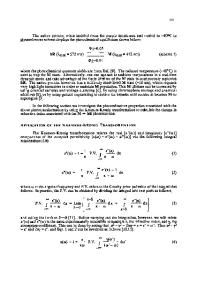Wavelength dependence of crystallization of alkoxy-derived ZrO 2 thin films prepared by ultraviolet irradiation
- PDF / 1,841,611 Bytes
- 8 Pages / 612 x 792 pts (letter) Page_size
- 72 Downloads / 322 Views
Wavelength dependence was observed in the ultraviolet (UV) irradiation-assisted crystallization of alkoxy-derived ZrO2 thin films. The surface grains of thin films deposited on Si(100) substrates became enlarged by UV irradiation using an ultrahigh-pressure mercury lamp. The crystallinity of thin films deposited on Si(100) substrates was improved by UV irradiation using a low-pressure mercury lamp. The reaction using the ultrahigh-pressure mercury lamp depended on the substrate type.
I. INTRODUCTION
II. EXPERIMENTAL PROCEDURE
ZrO2 is an attractive material with its high-dielectric constant (15–21),1,2 large band gap (5.3–6.4 eV),3–5 and good thermal stability against silicate formation on silicon.6–8 Thus, ZrO2 thin films are well-suited for many applications, e.g., the buffer layer for high-Tc superconductors or for integration of ferroelectric thin films in nonvolatile ferroelectric memories,9,10 gate dielectric for complementary metal oxide semiconductors,1,2 or oxygen sensors.11 It is important for the various applications of ZrO2 thin films to control their crystallinity, orientation, and surface morphology. The control of crystallinity, orientation, and surface morphology of metal oxide thin films has received extensive coverage in the literature.12–19 Photochemical reactions differ from thermochemical reactions in that they occur at lower temperatures and show various specific reactivities via excited states. Thus, photochemical reactions are expected to be extremely effective in controlling the crystal structure, microstructure, and surface morphology of inorganic thin films. This has led to many studies on the photo-assisted processing of metal oxide thin films.20–25 In our previous study, we found that the crystallinity, orientation, and surface roughness of alkoxy-derived SrBi2Ta2O9 (SBT) thin films were controlled by ultraviolet (UV) irradiation.26,27 The present paper investigates the effects of UV irradiation on crystallinity and surface morphology of alkoxy-derived ZrO2 thin films. Also, the effects of substrate type on the formation of thin films by UV irradiation are discussed.
A. Preparation of ZrO2 thin films
a)
Address all correspondence to this author. e-mail: [email protected] DOI: 10.1557/JMR.2005.0392
A 0.1 M precursor solution was prepared at 130 °C using zirconium tetra-n-butoxide [Zr(O-n-Bu)4] and 2-methoxyethanol. After refluxing at 130 °C, the solution was cooled to room temperature with stirring. A small amount of water was added to the solution [molar ratio of Zr(O-n-Bu)4:H2O ⳱ 1:1]; the solution was stirred overnight. Then, the solution was spin-coated on a p-type Si(100) substrate or SiO2 glass substrate. Each layer was deposited by a two-step process: 1000 rpm for 3 s and 3000 rpm for 30 s. As-deposited films were dried at 150 °C, and then irradiated by using a 250-W ultrahighpressure mercury lamp (UHPML; Multilight UIV-270, Ushio Co. Ltd., Tokyo, Japan; wavelength 270–460 nm) or a 200-W low-pressure mercury lamp (LPML; VUV165/B-1.1U, ORC Manufacturing Co., Ltd., Tokyo,
Data Loading...









